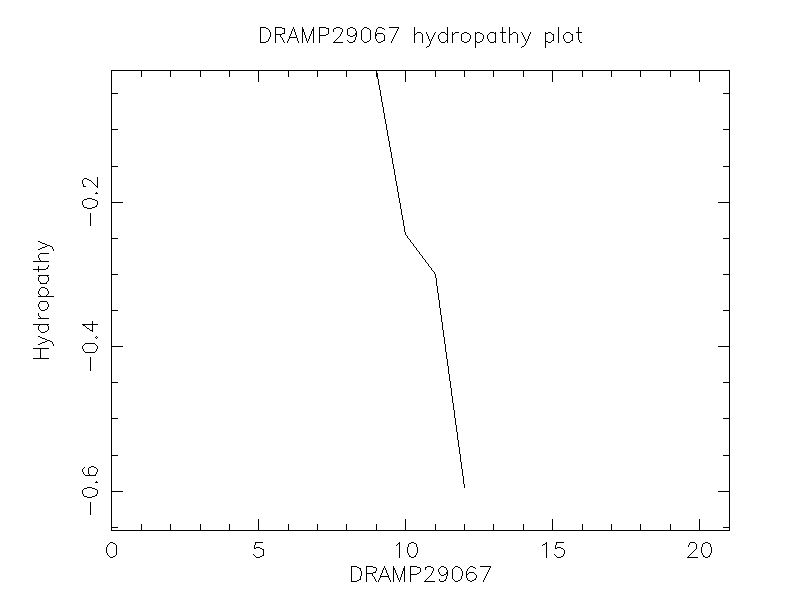General Information
-
DRAMP ID
- DRAMP29067
-
Peptide Name
- N6NH2 (N6 amidated at its C-terminus)
-
Source
- Synthetic construct
-
Family
- Not found
-
Gene
- N/A
-
Sequence
- GFAWNVCVYRNGVRVCHRRAN
-
Sequence Length
- 21
-
UniProt Entry
- No entry found
-
Protein Existence
- Synthetic form
Activity Information
-
Biological Activity
- Antimicrobial, Antibacterial, Anti-Gram-, Anti-Gram+
-
Target Organism
-
- [Ref.33348729] Gram-negative bacteria: Edwardsiella tarda(MIC = 0.5 μg/mL), Aeromonas veronii(MIC = 2 μg/mL), Escherichia coli CVCC195(MIC = 0.06 μg/mL), E. coli CVCC1515(MIC = 0.06 μg/mL), E. coli CVCC25922(MIC = 0.06 μg/mL), E. coli CVCCO157(MIC = 0.06 μg/mL), Salmonella typhimurium CVCC533(MIC = 0.25 μg/mL), S. typhimurium ATCC14028(MIC = 0.06 μg/mL), S. enteritidis CVCC3377(MIC = 0.06 μg/mL), S. pullorum CVCC1802(MIC = 0.25 μg/mL), S. pullorum CVCC1789(MIC = 0.06 μg/mL), Pseudomonas aeruginosa CICC21630(MIC = 0.06 μg/mL).
- Gram-positive bacteria: Staphylococcus aureus ATCC43300(MIC = 1 μg/mL), S. aureus ATCC546(MIC = 1 μg/mL), S. aureus ATCC25923(MIC = 1 μg/mL), S. hyicus 437-2(MIC = 16 μg/mL), S. hyicus 15095 (MIC = 4 μg/mL).
-
Hemolytic Activity
-
- [Ref.33348729]The hemolysis of N6NH2 towards mouse erythrocytes was 0.19% at a concentration of 256 μg/mL, lower than that of N6 (1.9%), indicating their low hemolytic activity
-
Cytotoxicity
-
- [Ref.33348729]Had very low cytotoxicity to mouse peritoneal RAW 264.7 macrophages (cell survival rate >93.35%)
-
Binding Target
- Lipopolysaccharide (LPS) and genomic DNA
Structure Information
-
Linear/Cyclic
- Cyclic
-
N-terminal Modification
- Free
-
C-terminal Modification
- Amidation
-
Nonterminal Modifications and Unusual Amino Acids
- There is a disulfide bond between Cys7 and Cys16
-
Stereochemistry
- L
-
Structure
- β-turn, coil and antiparallel sheet
-
Structure Description
- ①The structure analysis showed that N6 have one rigid disulfide bridge Cys7-Cys16, which links the two β-strands (Cys3-Asn10 and Arg13-Cys20) and forms an anti-parallel β-sheet. ②The secondary structures of N6NH2 and N6 in ddH2O were characterized by a coil and antiparallel strand or β-turn with a negative minimum at 200 nm. N6NH2 showed a more significant increase in α-helix and antiparallel strand in SDS solution than N6. Similarly, the CD spectrum of N6 and N6NH2 in 50% TFE showed one negative dichroic band at approximately 205 nm, and the positive maximum at 180 nm (strong) and at 230 nm
-
Helical Wheel Diagram
-
PDB ID
- 5Y0H
-
Predicted Structure
- There is no predicted structure for DRAMP29067.
Physicochemical Information
-
Formula
- C107H165N39O26S2
Absent Amino Acids
- DEIKLMPQST
Common Amino Acids
- RV
Mass
- 2477.85
PI
- 10.72
Basic Residues
- 5
Acidic Residues
- 0
Hydrophobic Residues
- 8
Net Charge
- +5
-
Boman Index
- -5487
Hydrophobicity
- -0.31
Aliphatic Index
- 64.76
Half Life
-
- Mammalian:30 hour
- Yeast:>20 hour
- E.coli:>10 hour
Extinction Coefficient Cystines
- 7115
Absorbance 280nm
- 355.75
Polar Residues
- 8
DRAMP29067

Comments Information
Comment
- In the model of fish peritonitis caused by E. tarda, superior to norfloxacin, N6NH2 improved the survival rate of fish, reduced the bacterial load on the organs, alleviated the organ injury and regulated the immunity of the liver and kidney. Amidation of the C-termini seems to be important in improving the lytic activity of the peptides against pathogenic bacteria. N6NH2 and N6 are different from common antimicrobial peptides in the secondary structure.
Literature Information
- ·Literature 1
-
Title
- Improved Stability and Activity of a Marine Peptide-N6NH2 against Edwardsiella tarda and Its Preliminary Application in Fish
-
Pubmed ID
- 33348729
-
Reference
- Mar Drugs. 2020 Dec 17;18(12):650. doi: 10.3390/md18120650.
-
Author
- Han H, Li T, Wang Z, Teng D, Mao R, Hao Y, Yang N, Wang X, Wang J.

